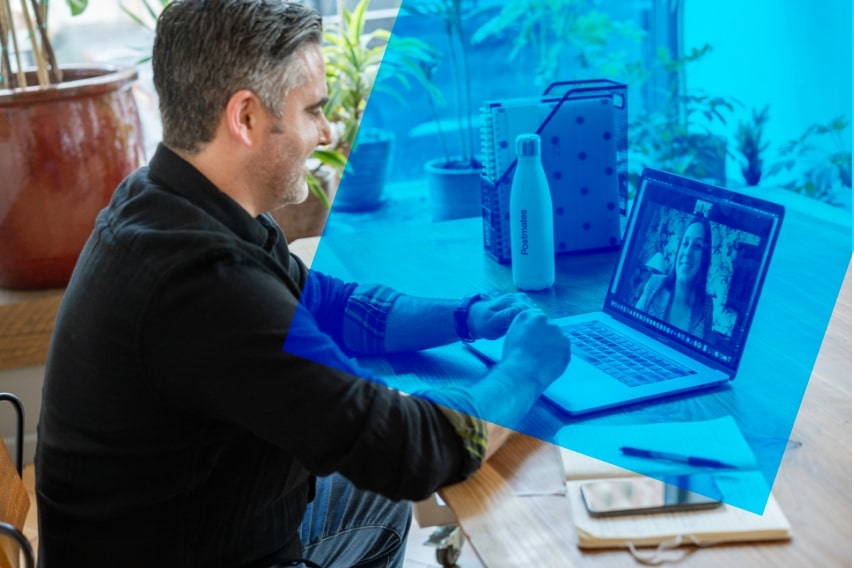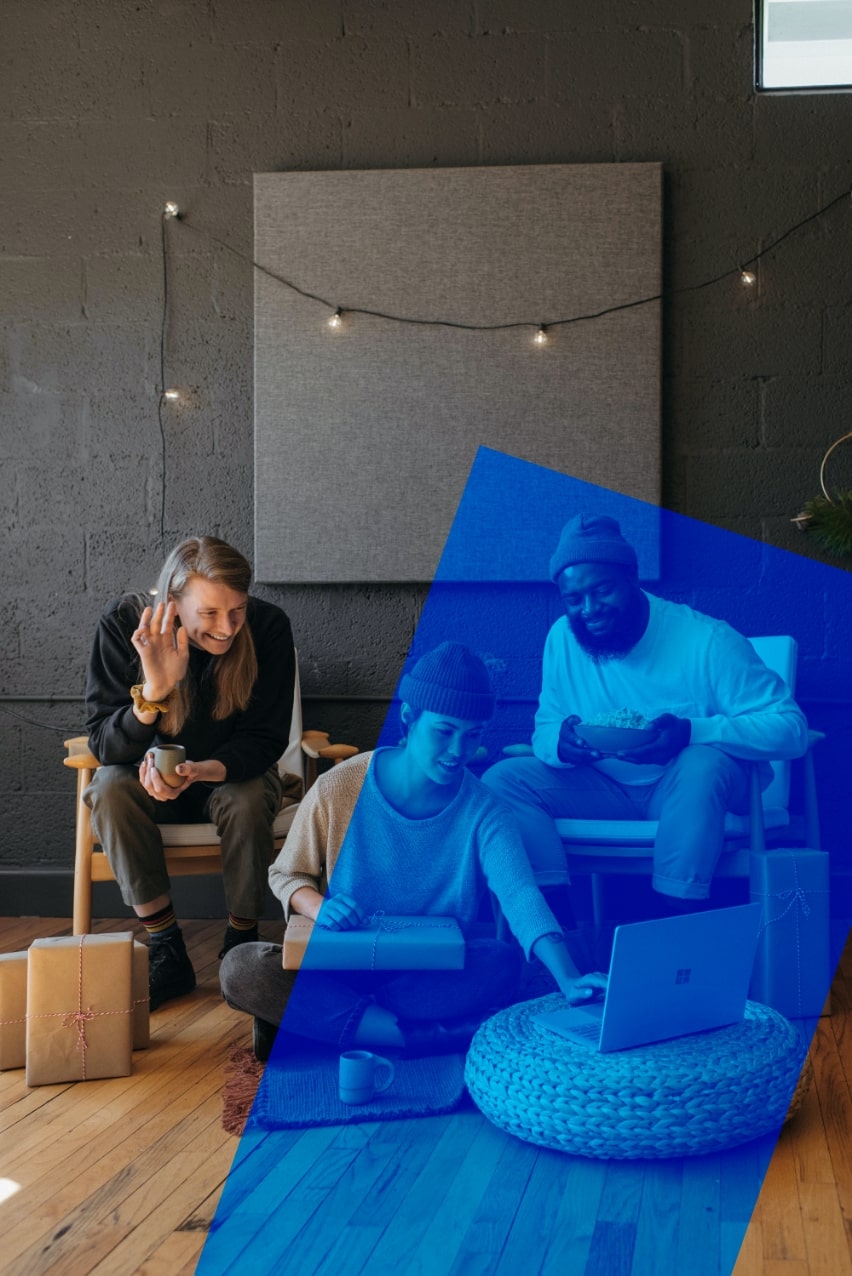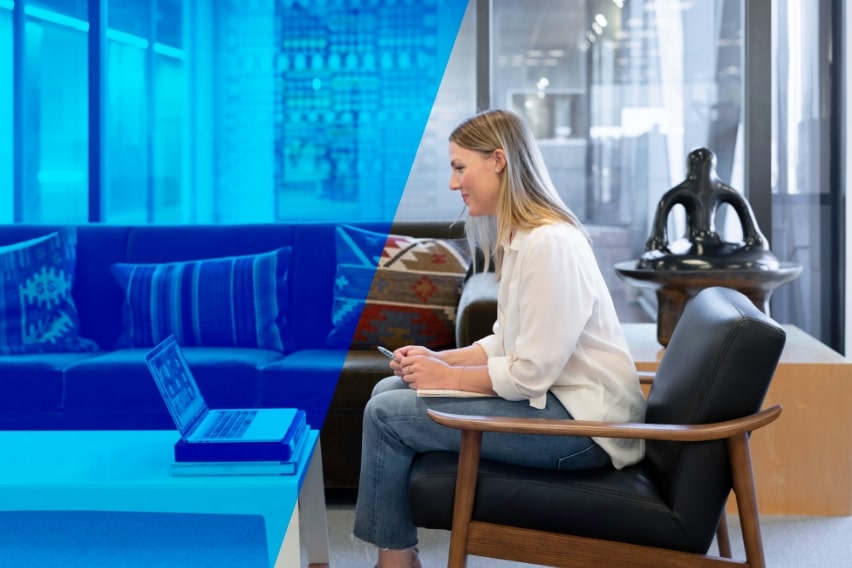How to ace a virtual interview
When you think about a job interview, you probably picture the moment of the interview itself: sitting at a desk, answering questions, and trying to evaluate whether the job seems like a good fit for you.
But there’s a bit more to it than that. If you want to excel at an interview – remote or in person – then there are three different stages to think about.
Stage 01:Preparing for an interview
Stage 02:During the interview Stage
03:Following up after the interview
It’s important to do well in the interview. But your preparation and follow-up can also make all the difference. Someone who’s great at talking off-the-cuff can still perform badly if they haven’t done their research before an interview. Someone who struggles with confidence during an interview can improve their chances with a great follow-up message.
So let’s go through those steps one by one, starting with how to prepare for a virtual interview.

STAGE 01:
HOW TO PREPARE FOR A REMOTE INTERVIEW
The first step is to think about what kind of interview you’re attending. With modern recruitment technology, there are lots of different ways to evaluate candidates, including:

You’ll need to prepare differently depending on the type of virtual interview.
For example, if you have a pre-recorded interview or a skills assessment coming up, then you’ll probably get some tips about which topics to prepare for. In a live interview, you’ll need to be ready to think on your feet. And if you’re asked to record a video CV, then you can practise a few times before you hit “record”.
Next, think about when your interview is scheduled. Try to make sure that the virtual interview is set for a time when:

Some remote jobs will involve time zone differences. If you’re interviewing with a company outside Scotland, make sure that you know which time zone they’re using. Ideally, the meeting time should work comfortably for both you and the interviewer.
Now it’s time to do your research. This is what makes really good candidates stand out. Sure, you might have all the skills in the job description. But do you know what makes this job different? What are the company’s history, values, and top clients? What’s the latest topic on their blog? Do they have an email newsletter that you could read? And is there anything in the job description that you’d like to question, clarify, or discuss?
PUT STICKY NOTES AROUND THE COMPUTER WITH ANY KEY POINTS OR QUESTIONS YOU WANT TO COVER DURING THE INTERVIEW.
If you know who is going to interview you, then you can research them too. Search for the names on a professional platform such as LinkedIn to find out more about their experience and interests. Maybe you have a past employer in common, or you both grew up in the same town. You don’t need to get too personal with this research, but a little background information could help you connect with your interviewers.
You can also do a bit of research into yourself. That might sound strange, but in fact, it’s easy to forget what you’ve worked on over the years. Take a few minutes to read through your own CV and cover letter. Be ready to talk about everything that you mentioned, and think about how each point relates to the original job description.
Finally, it’s time to prepare your interview space. Try and do this the day before the interview, so that you have plenty of time to sort out any issues.
Here’s a quick checklist to get you started:
- Check that your camera and microphone are working correctly.
- Check that your wifi is working smoothly. If you’re having problems, try tethering your computer to your mobile phone to use a data connection instead. A frozen or time-lagged video call is frustrating for everyone.
- Look at the feed from your camera. Is the lighting good? Can interviewers see your face clearly? Try to use natural light or cool lighting, rather than warm dim lights.
- Have the computer positioned so that you are looking into the camera at eye level.
- Turn off any background noise such as fans or music. If you live on a busy street, close the windows so that you won’t be interrupted by the sound of cars and people going past.
- Think about your background. You can show some personality, but make sure it isn’t too distracting. Check that the room is clean and tidy. Remove anything that’s too personal or political from the frame.
- If you don’t feel comfortable letting interviewers see inside your home, you can use a virtual background. Some video platforms also have an option to blur the background slightly.
If you opt for a virtual background, then choose carefully. Recruiters and employers say that they prefer professional backgrounds – so choose the stock photo of an office space over the Star Wars theme.
Because you’re at home, you can also add extra touches to help yourself feel relaxed and prepared.
Make sure that you have some water within easy reach. If you want to refer to the job description or your CV during the interview, then you can have them open as tabs on your computer. Some job candidates we spoke to also recommended putting sticky notes around the computer with any key points or questions you want to cover during the interview.
Having problems? It’s not the end of the world. If you have difficulty finding a quiet room or getting a decent internet connection, then try to let your interviewers know. They may well be sympathetic, or even offer to postpone the interview to a better time.
But if you prepare for your virtual interview in advance, then you should be set up for a smooth experience.

STAGE 02:
DURING A REMOTE INTERVIEW
Even though the location and the set-up are different, a virtual interview is a lot like an in-person interview. You still need to show up on time, answer questions and make a good impression.
But there are some extra tips for remote interviews, too. Because you’re speaking over an internet connection, it can be harder to hear clearly. Try to speak up and, if you’re a fast talker, maybe even slow down a little so that the interviewer has time to hear and process your answers. Avoid covering your mouth with your hand, which makes it harder to read your expression and hear your words.
Just like in an in-person interview, good eye contact, posture, and a friendly smile can go a long way. You can create the impression of keeping eye contact by positioning your computer with the camera at eye level. Focus on the screen and try not to get distracted.
A recent survey from VisualCV found that 80% of unsuccessful candidates in a video interview seemed distracted. Keeping your gaze on the screen is a way to show interviewers that you are interested and engaged.
According to recruiters, another big problem is candidates who seem to be reading from notes. It’s important to research and prepare, but avoid reading out answers or giving a speech that you’ve rehearsed. If you want to have notes, just write short reminders of key points rather than full sentences.
Finally, you want to avoid any red flags in the interview. Recruiters say that they avoid candidates who:

As you can see, you don’t have to learn any fancy techniques or memorise a speech to ace your interview. If you’re on time, focused, polite, and interested, then you’ll get on well.

STAGE 03:
FOLLOWING UP AFTER A REMOTE INTERVIEW
The interview’s over. You’ve answered all the questions, talked about your greatest strengths and weaknesses, and hopefully it’s gone well. Now what?
If you want to make a really good impression on an employer, follow up after the interview. This is especially important if you’re job hunting remotely, because you’ve had fewer opportunities to connect with people in person. You missed out on the casual chat over coffee and the all-important handshake – but you can still make yourself memorable.
After the interview – ideally on the same working day – send a quick email or LinkedIn message to your interviewer. It doesn’t have to be long or eloquently expressed. Just send them a quick thanks for their time, and remind them of how excited you are about the job opportunity.
If you discussed something in particular during the interview (for example, you told them about a project you worked on which seemed especially relevant), then you might send a link so they can follow it up.
Sending a quick thank you note has several benefits:
- It makes you more memorable to the interviewer.
- It shows that you have strong communication skills.
- It opens the door to ask for feedback, even if your job application isn’t successful.
- If you don’t get the job this time, the interviewer might keep you in mind for a future role.
If the interviewer didn’t say when they’d be in touch, this is also a chance to set expectations. Will you hear within the week? Will there be another round of interviews? If there are any questions that you forgot to ask during the interview, now’s your chance.
This post was supplied to HRTech247.com and written by s1jobs.com. Keep an eye out for Part 3 to come.





